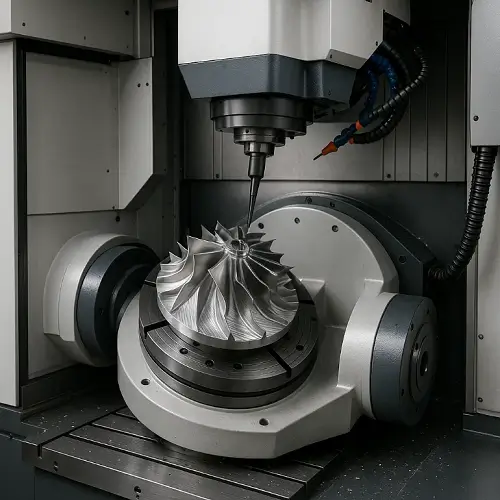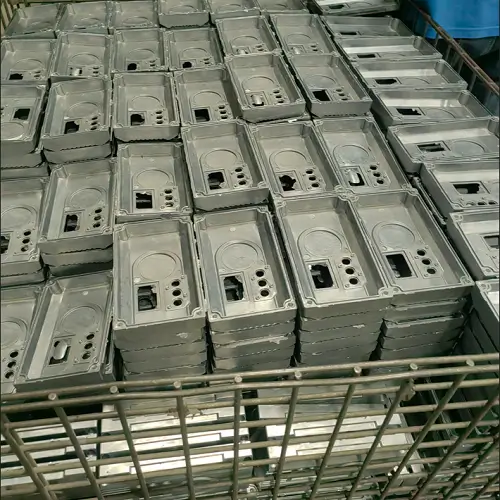As industries increasingly demand materials that are lightweight, corrosion-resistant, and high-strength, aluminum stands out for its unique combination of properties. Its unique combination of properties, however, also presents specific challenges for welding. From aerospace structures to automotive parts and consumer electronics, mastering aluminum welding requires a thorough understanding of the metal and its processes. This guide covers the key difficulties in welding aluminum, reviews common techniques, and highlights important considerations before and after welding. Additionally, it explains how JeekRapid helps clients achieve excellent welding quality.

Why Is Welding Aluminum Challenging?
Aluminum is widely favored for its low melting point and beneficial qualities such as light weight, strength, corrosion resistance, thermal conductivity, and electrical performance. Despite these advantages, welding aluminum demands specialized skills and careful preparation. One major challenge is the natural oxide layer that forms on aluminum surfaces. This layer melts at around 2000°C—significantly higher than aluminum’s base melting point of approximately 660°C—making it necessary to remove or penetrate it during welding. Failure to do so may cause defects such as burn-through or cracking.
Another factor is aluminum’s high thermal conductivity, which causes heat to dissipate rapidly from the weld zone. Maintaining a stable weld pool therefore requires greater energy input and precise control. Porosity is also a concern; contaminants like moisture or oils trapped on the surface can create voids that weaken the joint.
Additionally, aluminum’s tendency to warp or bend during welding presents challenges. Its high thermal expansion coefficient means improper clamping or insufficient preheating can cause distortion, affecting dimensional accuracy. At JeekRapid, we have developed expertise in predicting and managing these issues to consistently deliver welds that meet stringent quality standards.
How to Weld Aluminum
Welding aluminum successfully involves selecting the right method based on material type, part thickness, joint design, and production volume. Various welding techniques, such as MIG, TIG, spot welding, and friction stir welding, each offer unique advantages and limitations. Understanding these differences is crucial, especially in precision manufacturing, where the choice can mean the difference between a strong, clean weld and costly failure.
What Are the Different Techniques for Welding Aluminum?
Tungsten Inert Gas (TIG) Welding
TIG welding is popular for producing precise, clean welds. This method gives welders fine control over heat input, which is essential to penetrate the oxide layer without overheating the metal. TIG is particularly well-suited for thin aluminum sheets and parts requiring a smooth finish. Typically, 100% argon is used as shielding gas, with filler rods such as ER4043 or ER5356. Despite its quality, TIG welding tends to be slower and requires experienced operators. Due to these factors, many manufacturers choose MIG welding for higher-speed production.
Metal Inert Gas (MIG) Welding
MIG welding is favored for thicker aluminum profiles and faster throughput. It generally uses 100% argon as shielding gas and can deposit filler metal quickly. MIG welding is easier to learn but is more prone to spatter and porosity, which makes thorough surface preparation critical. While weld quality may not equal that of TIG, MIG offers cost-effective and efficient aluminum welding suitable for many industrial applications.
Friction Stir Welding (FSW)
FSW is an innovative solid-state welding technique gaining traction in recent years. This process uses a rotating tool to generate heat and mechanically mix the metals at the joint without melting them. It is widely used in aerospace and railway manufacturing to join flat aluminum sheets. The method provides excellent joint strength without filler metals but requires specialized machinery and setup.
Resistance Spot Welding
Common in automotive manufacturing and thin sheet metal joining, resistance spot welding clamps workpieces between electrodes and applies high current and pressure. This rapidly heats and melts the contact points to create welds. It produces small, precise weld spots with limited heat-affected zones and doesn’t require filler material. Resistance spot welding suits aluminum alloys, stainless steel, and low-carbon steel in high-volume, cost-sensitive production. Its speed and automation compatibility make it a key process despite limitations for thick or high-strength materials.
Electron Beam Welding (EBW)
EBW is a high-energy, high-precision technique that directs a focused electron beam onto the workpiece in a vacuum chamber. This melts the metal locally, allowing deep, narrow welds with minimal distortion. EBW achieves excellent depth-to-width ratios and can weld through thick sections in a single pass. Typical applications include aerospace, nuclear industry, precision molds, and electronics. Although the equipment is costly and requires complex maintenance, EBW remains indispensable for top-tier manufacturing quality and accuracy.
Laser Welding
Laser welding offers high energy density and a minimal heat-affected zone, making it suitable for small, intricate parts. This method produces clean, narrow welds and enables deep penetration with rapid welding speeds. Although setup costs are high and laser welding is less adaptable to all aluminum alloys, it mitigates challenges posed by aluminum’s reflectivity and thermal conductivity. Its precise, fine beam accesses tight joints, such as folded sheet metal structures, where traditional torches cannot reach.
Key Considerations Before and After Welding Aluminum
Achieving durable, high-quality aluminum welds requires careful preparation and post-weld treatment. Before welding, surfaces must be free from oxides, oils, and moisture. Cleaning with a stainless steel brush followed by acetone or alcohol ensures the weld area is clean. Joint fit-up should be tight and even to accommodate aluminum’s fluid weld pool.
Preheating thick sections between 150°C and 200°C is recommended to reduce thermal shock and minimize cracking. Selecting filler alloys that match the base metal enhances strength and corrosion resistance. Controlling heat input carefully prevents distortion, while proper shielding gas coverage protects the molten weld pool from atmospheric contamination.
Post-weld cleaning removes soot and oxide residues, sometimes requiring additional brushing. Inspections for defects like undercut, porosity, or lack of fusion are essential, especially for critical components. Depending on the application, post-weld treatments such as stress relief or anodizing can improve durability and corrosion resistance.
At JeekRapid, technicians follow these rigorous protocols and customize inspection steps to meet client standards. This comprehensive approach minimizes failure risks and extends the service life of aluminum welded parts.
Conclusion
Aluminum welding stands as a core joining technique in modern manufacturing. Whether working with thick aluminum castings or thin precision sheets, it remains a reliable method for structural assembly.
JeekRapid offers tailored high-precision aluminum welding services designed around your project’s unique needs. Our expertise covers various aluminum grades, welding processes, and inspection requirements. From prototyping to low-volume production, we deliver clean, consistent welds that meet your quality expectations.
Contact JeekRapid today to request a quote or learn more about our aluminum welding capabilities.
Frequently Asked Questions
Can you weld aluminum?
Yes. Aluminum can be welded using TIG, MIG, laser, and friction stir methods, though special preparation is needed due to its oxide layer and thermal properties.
Can you weld aluminum to steel?
Direct welding of aluminum to steel is generally not feasible because of metallurgical incompatibilities. Techniques like bimetallic transition inserts or explosion welding can be used instead.
How do you weld aluminum?
Welding aluminum depends on the application. Typically, the metal is cleaned, the appropriate filler and shielding gas are selected, and TIG or MIG welding is performed with adjusted heat settings.
Can you MIG weld aluminum?
Yes. MIG welding is effective for aluminum, especially for thicker sections. It is faster than TIG but requires careful setup to avoid spatter and porosity.
Can you stick weld aluminum?
Stick welding (SMAW) is not recommended for aluminum as it often results in weak, porous welds. TIG and MIG are preferred.
How to TIG weld aluminum?
Use AC current, a clean tungsten electrode, and 100% argon gas. The torch should be pushed with a short arc length. Preheating may be necessary for thicker parts.
Can you weld aluminum to aluminum?
Yes. With proper technique and filler selection, aluminum alloys can be welded to each other using TIG or MIG.
Can you weld aluminum with a MIG welder?
Yes, provided the welder supports aluminum wire feeding and you use a spool or push-pull gun. Shielding gas should be 100% argon or an argon-helium mix.
Can you weld cast aluminum?
Yes, but it is more difficult due to impurities and porosity. Preheating and proper filler (e.g., 4047) are recommended.
Does JB Weld work on aluminum?
JB Weld produces epoxies suitable for bonding aluminum in non-structural applications but is not a substitute for welding in load-bearing parts.


